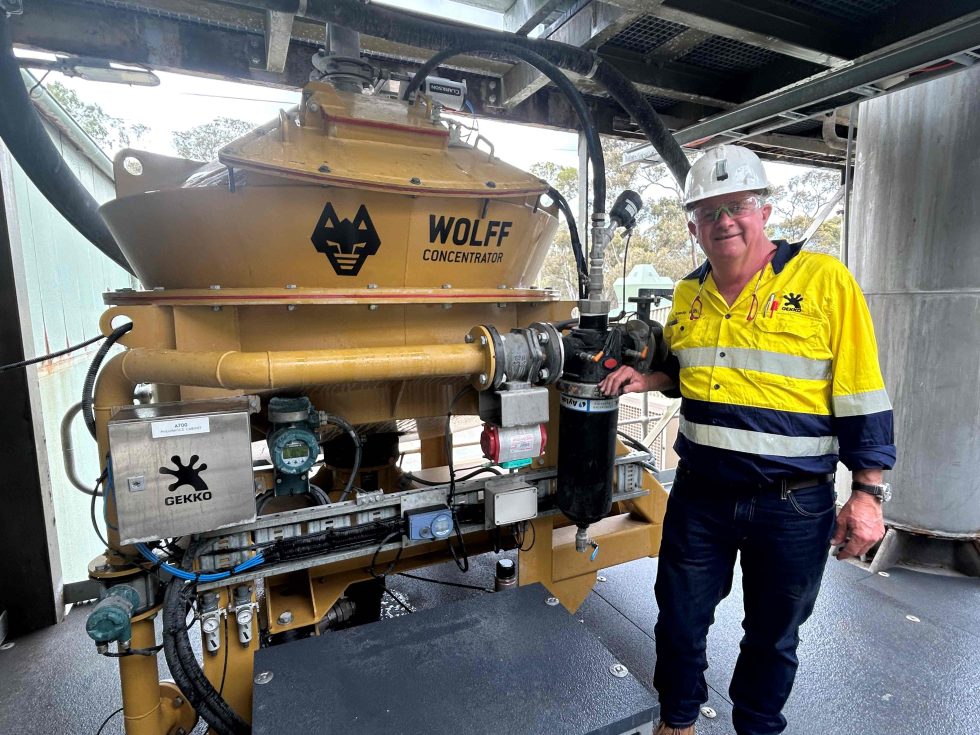Case study on Wolff concentrator highlights innovative gravity recovery


A recently released case study highlighted the benefits of the Gekko Wolff concentrator at Kaiser Reef’s processing plant in Maldon, Victoria in Australia.
The Wolff batch centrifugal concentrator (Wolff) is a groundbreaking technology designed to transform gold processing by utilizing "dirty" water. This ‘first of its kind’ innovation enables mining companies to recycle water efficiently, addressing water stewardship and enhancing sustainability, while reducing maintenance costs and requirements. The mining industry is committed to enhancing water management practices while also improving efficiency, safety, and productivity. In some locations, mines face the challenge of having no or very limited access to fresh water. The Wolff gravity-based, batch centrifugal concentration (BCC) system helps meet these challenges by enabling mines to operate using non-potable water, including both recycled and contaminated sources.
The absence of a gravity circuit at the processing plant has led to the increase of significant quantities of coarse gold accumulating in the milling circuit. To recover the coarse gold that was being held up in gold traps (mill discharge hopper and cyclone underflow launder) frequent manual cleaning had to be carried out to prevent a drop in recovery. As a result, metal accounting has become a challenging task due to the variable nature of manually recovering free gold from the gold traps. These issues have had an impact on the overall plant recovery, highlighting the need for a gravity concentrator. However, the small throughput made it challenging to use traditional gravity concentrators because of the large volume of clean water required.
The introduction of the Gekko Wolff concentrator at the processing plant in Maldon has effectively addressed the challenges presented by the absence of a gravity circuit. The Wolff’s innovative design, particularly its capability for handling dirty process water and its easily maintainable segmented bowl, has enhanced operational reliability, while addressing water stewardship.
More information is posted on www.Gekkos.com.
Comments
Geoff Casey
I instigated the introduction of Knelson Concentrators into the Tanami gold plant, N.T. Australia back in late 1980’s as I recall. This was I believe the first time Knelson Concentrators had been included in a hard rock gold plant. At the Tamami had the same problem as the Kaisar Reeks plant, course gold hiding somewhere and not being recovered. The inclusion of “gold traps” in a gold plant as referred to in this article, to me at least, indicates poor design or sloppy construction. The inclusion of Knelson of Falcon Concentrators is almost an industry standard I would have thought. By recovering the “free” gold by gravity is a quick and easy step which reduces the load on the leach circuit and reduces operating costs.
I have a problem with some of the statements made in this publication initially, “the small throughput made it challenging to use traditional gravity concentrators because of the large volume of clean water required.” I ask, does this include the GekKo inline pressure jigs? The Gekko Wolff concentrator is simply another variation of a Knelson Concentrator.
Knelson Concentrators are built in sizes ranging from 7.5inchs to 48inchs with capacities up to about 500t/h, all or most of which can operate automatically using recycled mill water.
I find much of this article misleading to the point of being false and I am disappointed to read such in a publication I thought might do better than this.
I make these comments based on 50plus years’ experience in the design and construction of gold and tin plants many of which I owned and operated. I also purchased the first Knelson Concentrator in the Northen Territory Australia after meeting Byron Knelson in Darwin Australia. I later urged him to build the 48inch variant